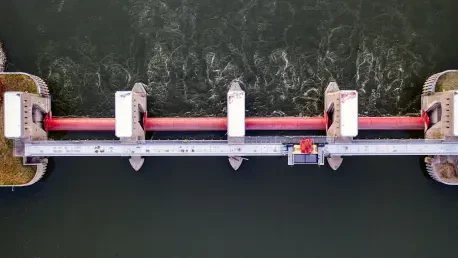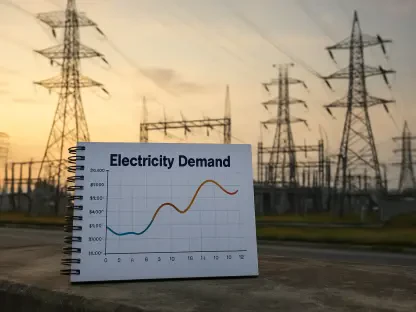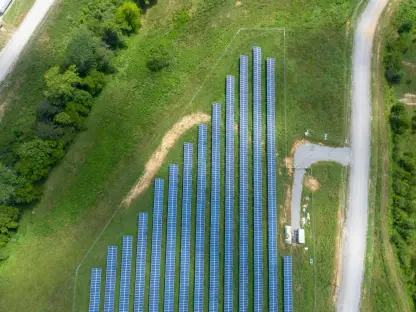In the rugged heart of the Scottish Highlands, a silent giant has powered communities for over a century, harnessing the raw force of water to light homes and fuel industries. The Kinlochleven hydropower plant, a marvel of 1909 engineering, stands as a testament to human ingenuity—but can it meet the soaring energy demands of the modern era? As the world pivots toward sustainable solutions, this historic facility is undergoing a transformative upgrade, promising to bridge the past with the future of renewable energy. This story uncovers how a century-old powerhouse is being reborn to tackle today’s climate challenges.
A Century-Old Powerhouse Reborn: Why Kinlochleven Matters Now
Nestled in the dramatic landscape of the Scottish Highlands, the Kinlochleven hydropower plant has been a cornerstone of renewable energy since its commissioning over 100 years ago. Originally built to power an aluminum smelter, it has long outlived its initial purpose, becoming a symbol of enduring infrastructure. Today, with global energy needs shifting toward cleaner sources, this historic site is poised for a revival that could redefine its legacy.
The significance of Kinlochleven lies not just in its age but in its potential to contribute to a sustainable grid. Managed by investor Equitix since 2019, the plant is at the forefront of a modernization effort that aims to ensure it remains relevant amid rising electricity demands. This project serves as a beacon of hope, proving that even the oldest structures can adapt to contemporary challenges with the right vision and investment.
The Bigger Picture: Hydropower as a Renewable Energy Lifeline
Amid the urgent push to combat climate change, hydropower emerges as a reliable anchor in the renewable energy mix. Unlike solar or wind, which depend on weather conditions, hydropower offers consistent output, making it a critical asset for grid stability. With transportation electrification and industrial growth straining existing systems, modernizing aging plants like Kinlochleven is no longer optional but essential.
Globally, the stakes are high as energy infrastructure faces the dual burden of age and environmental scrutiny. Upgrades to historic facilities ensure compliance with stringent safety and ecological standards while boosting efficiency. Hydropower’s durability—often outlasting other renewables by decades—positions it as a linchpin in the transition to a low-carbon economy, highlighting why investments in such projects are gaining momentum worldwide.
This broader context underscores the urgency of revitalizing plants that have stood the test of time. As nations grapple with severe weather impacts and aging grids, hydropower’s role as a steadfast energy source becomes even more pronounced. The Kinlochleven initiative is a microcosm of a global movement to preserve and enhance these vital resources for future generations.
Inside the Kinlochleven Upgrade: A Blueprint for Modernization
At the heart of the Kinlochleven transformation is a long-term operations and maintenance contract with Green Highland, a Voith company, tasked with overhauling the plant’s core components. This comprehensive plan targets the facility’s three 10MW Francis turbines, dam, pipelines, and the expansive Blackwater Reservoir. The goal is clear: optimize performance and extend operational life while meeting modern health and safety regulations.
What sets this project apart is the integration of expertise from the original Kinlochleven team, now part of Green Highland. Their decades of site-specific knowledge ensure continuity, blending traditional insights with cutting-edge technology. This approach not only safeguards the plant’s historical integrity but also aims to push its efficiency to new heights, setting a benchmark for similar endeavors.
Comparatively, global efforts mirror this ambition. In Sweden, the 113-year-old Untra plant on the Dalalven River is increasing capacity from 42MW to 48MW through turbine replacements. Canada’s Isle-Maligne facility, with a $1.2 billion investment, is modernizing its twelve Francis units from 2025 onward. Meanwhile, Poland’s Wały Śląskie plant adopts digital twins via the D-HYDROFLEX project for predictive maintenance. These diverse strategies reflect a shared commitment to innovation in hydropower modernization.
Voices of Authority: Insights on Sustaining Hydropower’s Legacy
Expert perspectives lend weight to the Kinlochleven project’s vision, with Alex Reading, Managing Director at Green Highland, articulating a bold ambition. “The aim is to ensure this plant supplies vital renewable energy for another century,” Reading stated, emphasizing a dedication to sustainability. This sentiment captures the essence of why such upgrades are pivotal in today’s energy landscape.
Industry leaders echo this focus on long-term value, with asset managers like Equitix championing the inherent longevity of hydropower infrastructure. Their strategic investments signal confidence in the sector’s ability to support clean energy grids. Beyond corporate views, local voices from the Kinlochleven community highlight the plant’s cultural importance, often recalling its role in shaping regional history and identity.
These combined insights paint a vivid picture of a project rooted in both technical necessity and societal impact. The modernization effort is not just about machinery; it’s about preserving a legacy that has powered lives for generations. Such narratives reinforce the broader argument for sustained investment in renewable assets, ensuring they remain cornerstones of energy security.
Applying the Lessons: How Hydropower Modernization Can Shape the Future
The Kinlochleven upgrade offers valuable lessons for other aging hydropower facilities worldwide, starting with the power of strategic partnerships. Collaborations like the one with Green Highland demonstrate how combining local expertise and global innovation can breathe new life into historic plants. This model could inspire similar alliances elsewhere, fostering a network of revitalized energy hubs.
Another takeaway is the adoption of digital tools to enhance operations, as seen in Poland’s digital twin technology. Such advancements enable predictive maintenance and adaptive efficiency, providing a roadmap for facilities stuck with outdated systems. Additionally, securing substantial investments for capacity boosts, akin to Canada’s Isle-Maligne project, remains crucial for scaling impact in the face of growing energy demands.
Ultimately, these strategies underscore a delicate balance between honoring historical infrastructure and embracing technological progress. For the hydropower sector, modernization is a pathway to relevance, ensuring that renewable energy continues to anchor global sustainability goals. Stakeholders everywhere can draw from these examples to craft tailored solutions, reinforcing hydropower’s enduring role in a dynamic world.
Looking back, the journey of Kinlochleven’s upgrade unfolded as a remarkable chapter in the story of renewable energy, blending over a century of history with modern innovation. The successful collaboration with Green Highland, bolstered by expert insights and global parallels, showcased what was possible when vision met action. For the future, the challenge shifted to replicating this success across other aging plants, ensuring that investments and partnerships continue to prioritize sustainability. Policymakers and industry leaders were encouraged to champion these efforts, building a network of resilient hydropower facilities to power the next century with clean, reliable energy.









